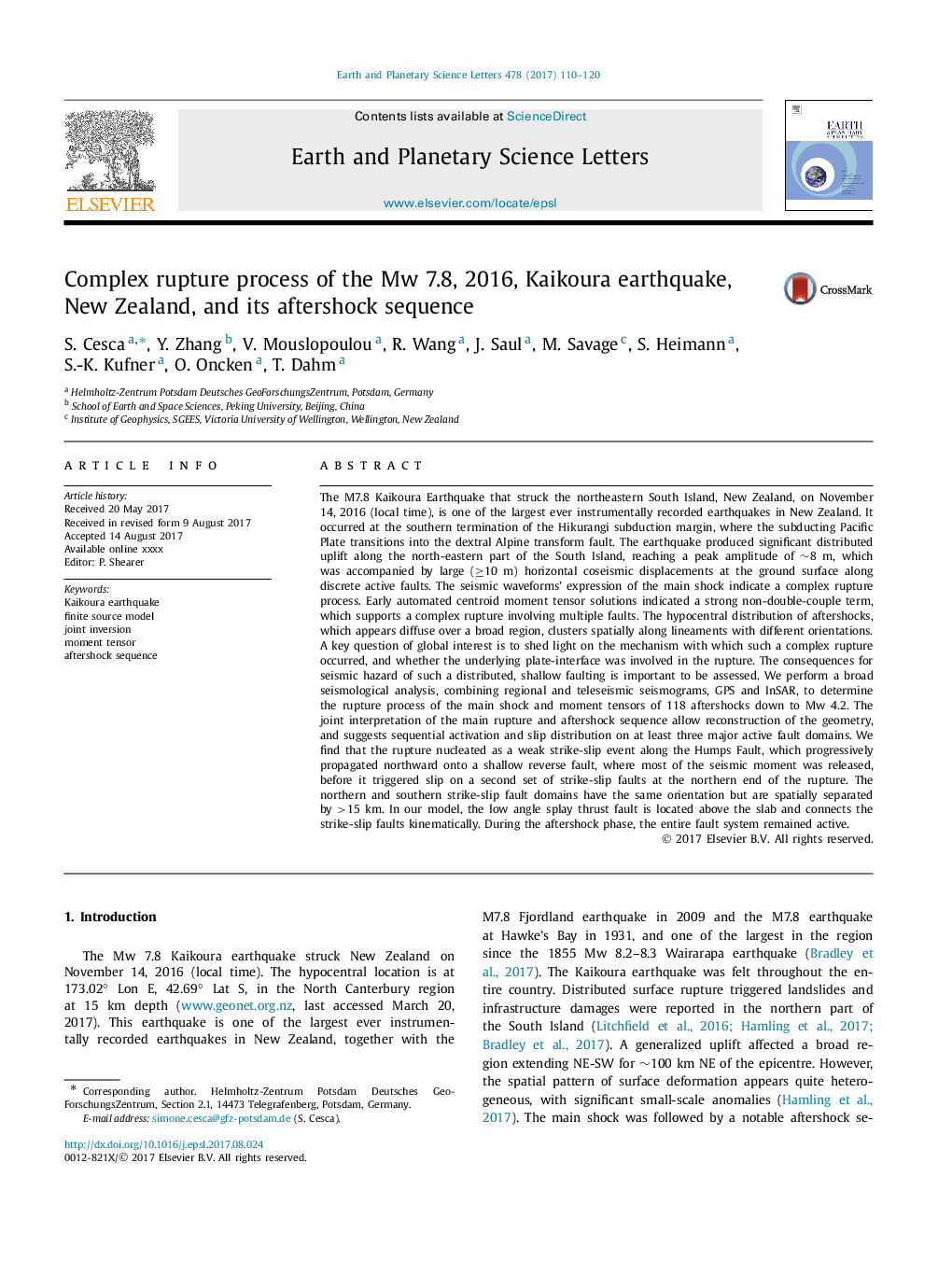| کد مقاله | کد نشریه | سال انتشار | مقاله انگلیسی | نسخه تمام متن |
|---|---|---|---|---|
| 5779560 | 1634678 | 2017 | 11 صفحه PDF | دانلود رایگان |
عنوان انگلیسی مقاله ISI
Complex rupture process of the Mw 7.8, 2016, Kaikoura earthquake, New Zealand, and its aftershock sequence
دانلود مقاله + سفارش ترجمه
دانلود مقاله ISI انگلیسی
رایگان برای ایرانیان
کلمات کلیدی
موضوعات مرتبط
مهندسی و علوم پایه
علوم زمین و سیارات
علوم زمین و سیاره ای (عمومی)
پیش نمایش صفحه اول مقاله

چکیده انگلیسی
The M7.8 Kaikoura Earthquake that struck the northeastern South Island, New Zealand, on November 14, 2016 (local time), is one of the largest ever instrumentally recorded earthquakes in New Zealand. It occurred at the southern termination of the Hikurangi subduction margin, where the subducting Pacific Plate transitions into the dextral Alpine transform fault. The earthquake produced significant distributed uplift along the north-eastern part of the South Island, reaching a peak amplitude of â¼8 m, which was accompanied by large (â¥10 m) horizontal coseismic displacements at the ground surface along discrete active faults. The seismic waveforms' expression of the main shock indicate a complex rupture process. Early automated centroid moment tensor solutions indicated a strong non-double-couple term, which supports a complex rupture involving multiple faults. The hypocentral distribution of aftershocks, which appears diffuse over a broad region, clusters spatially along lineaments with different orientations. A key question of global interest is to shed light on the mechanism with which such a complex rupture occurred, and whether the underlying plate-interface was involved in the rupture. The consequences for seismic hazard of such a distributed, shallow faulting is important to be assessed. We perform a broad seismological analysis, combining regional and teleseismic seismograms, GPS and InSAR, to determine the rupture process of the main shock and moment tensors of 118 aftershocks down to Mw 4.2. The joint interpretation of the main rupture and aftershock sequence allow reconstruction of the geometry, and suggests sequential activation and slip distribution on at least three major active fault domains. We find that the rupture nucleated as a weak strike-slip event along the Humps Fault, which progressively propagated northward onto a shallow reverse fault, where most of the seismic moment was released, before it triggered slip on a second set of strike-slip faults at the northern end of the rupture. The northern and southern strike-slip fault domains have the same orientation but are spatially separated by >15 km. In our model, the low angle splay thrust fault is located above the slab and connects the strike-slip faults kinematically. During the aftershock phase, the entire fault system remained active.
ناشر
Database: Elsevier - ScienceDirect (ساینس دایرکت)
Journal: Earth and Planetary Science Letters - Volume 478, 15 November 2017, Pages 110-120
Journal: Earth and Planetary Science Letters - Volume 478, 15 November 2017, Pages 110-120
نویسندگان
S. Cesca, Y. Zhang, V. Mouslopoulou, R. Wang, J. Saul, M. Savage, S. Heimann, S.-K. Kufner, O. Oncken, T. Dahm,